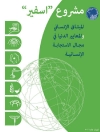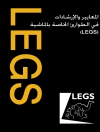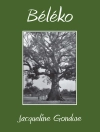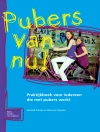In recent years, attending to diversity in the cultivation of embodied identity has been given additional impetus as a result of intersectionality theory. Despite this, a key gap remains in terms of knowledge about masculinity and disability. This book addresses this lacuna through ten empirical chapters organised through the inter-related themes of corporeality, pedagogy and the critique of otherness. Each of the chapters positions the subject of masculinity and disability as a site of cultural pedagogy by affirming different ways of knowing of masculinity beyond dominant ideologies that normalise a particular masculine body and relegate disabled masculinities to the position of abnormal ‘Other’.
Part One focuses on pedagogy. Through the materialities of ‘medicalized colonialism’, imprimaturs of ‘relational genealogies’, ‘compounding differences’ and an analytical exposition of some of the neo-colonial conditions of the Global South within spatially-considered places ofthe Global North, Chapter 1 examines the denial of human rights to the Indigenous Anishinaabe community of Shoal Lake 40 in Canada. Chapter 1 theorises masculine corporeality in terms that take seriously First Nations’, national and transnational body politics seriously. Chapter 2 examines the ways that movement and affect serve as a form of pedagogy for boys with autism spectrum in schools.
Part Two’s focus on corporeality includes an examination of the nexus of disability and diagnosis in the context of transgender men’s experiences of mental health, and a discussion of the ways that intersex individuals who identify as men and have experienced ‘genital normalising surgery’ actively negotiate pluralised masculinities. The focus on media in Part Three encompasses a study of the mis-interpellation of the disabled male subject in Australian male literature, research on the discursive strategies utilised in media representations of disabled veteransin Turkey, and an analysis of the political implications of depictions of masculinity, disability and sexualities in a variety television program. Part Four’s theme of self-stylisation takes up the questions of men’s reconstructions of masculinity in light of Lyme Disease, the potential pleasures of heterosexuality for young men with a hearing disability in the realm of Australian-Rules Football, and the diverse ways that disabled men negotiate patriarchal masculinity in intimate relationships.Spis treści
Part 1. Of pedagogy, .- Chapter1. ‘O Canada’ or ‘Freedom Road’?.- Chapter 2. A Pedagogy of Movement and Affect.- Part 2. Corporeality, .- Chapter 3. The Disability and Diagnosis Nexus.- Chapter 4. Intersex Men, Masculinities and ‘Disabled’ Penises.- Part 3. (Re)presentation, .- Chapter 5. More than Puddles.- Chapter 6. Media Representations of Disabled Veterans of the Kurdish Conflict.- Chapter 7. Formatting Disability in Contemporary Variety TV.- Part 4. and critical self-stylisation.- Chapter 8. Men, Chronic Illness and the Negotiation of Masculinity.- Chapter 9. Hearing (Dis)abled Masculinities in Australian Rules Football.- Chapter 10. Disidentification and Ingenuity in the Sex Lives of Disabled Men
O autorze
Dr Cassandra Loeser is a Lecturer in Research Education at the University of South Australia and Director of the Research Centre for Gender Studies in the Hawke Research Institute, Australia.
Dr Vicki Crowley is an adjunct Senior Lecturer in communication, cultural studies and gender studies at the University of South Australia, Australia. She is also an independent creative producer, writer and editor.
Barbara Pini is a Professor in the School of Humanities, Languages and Social Sciences at Griffith University Brisbane, Australia.












